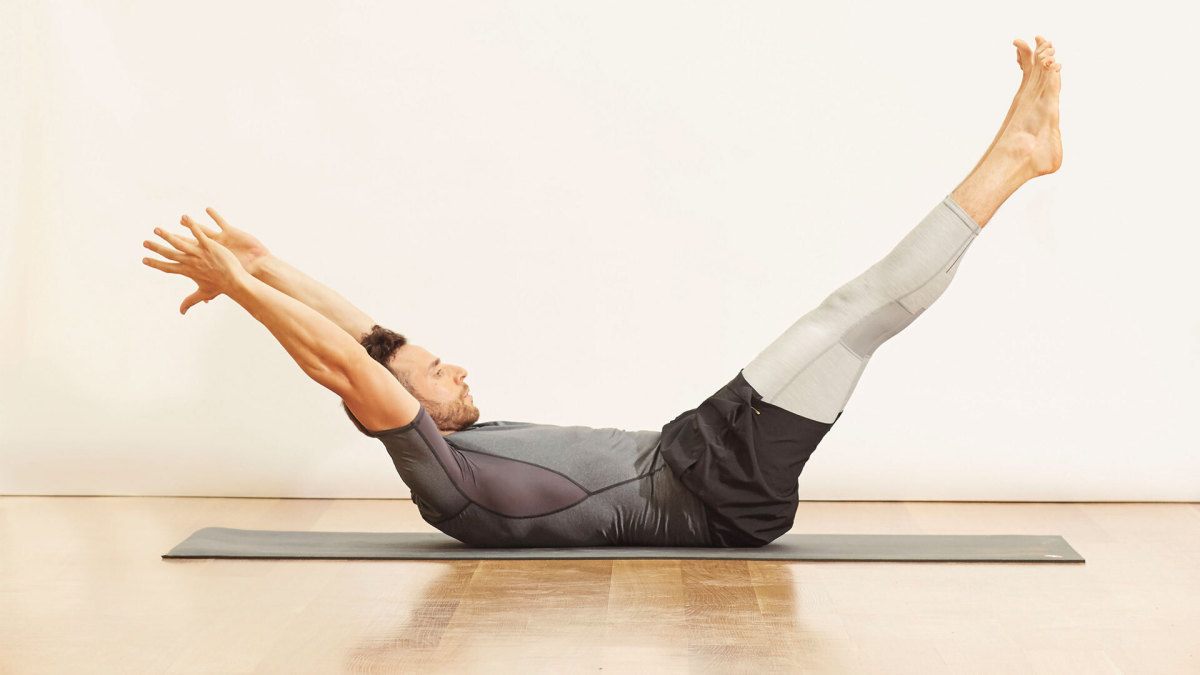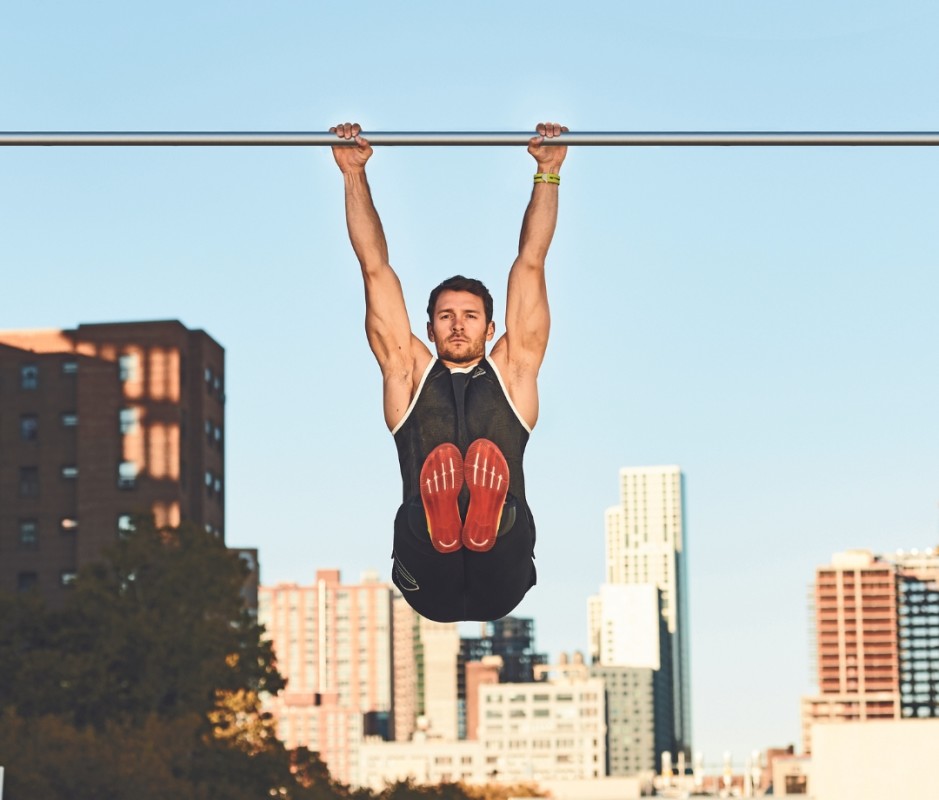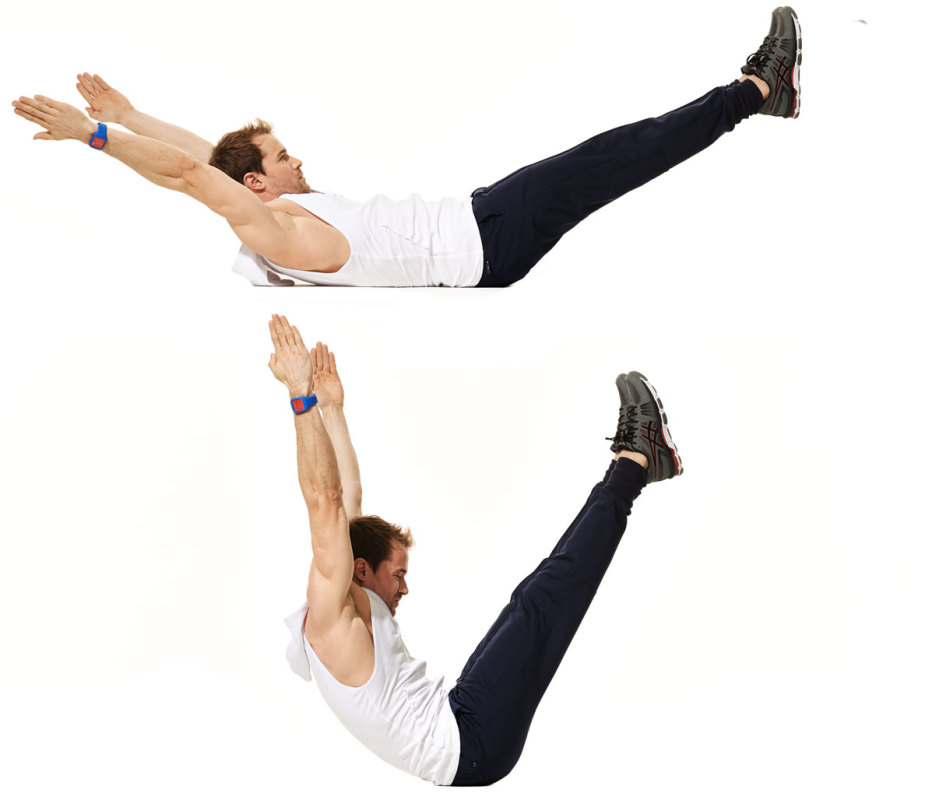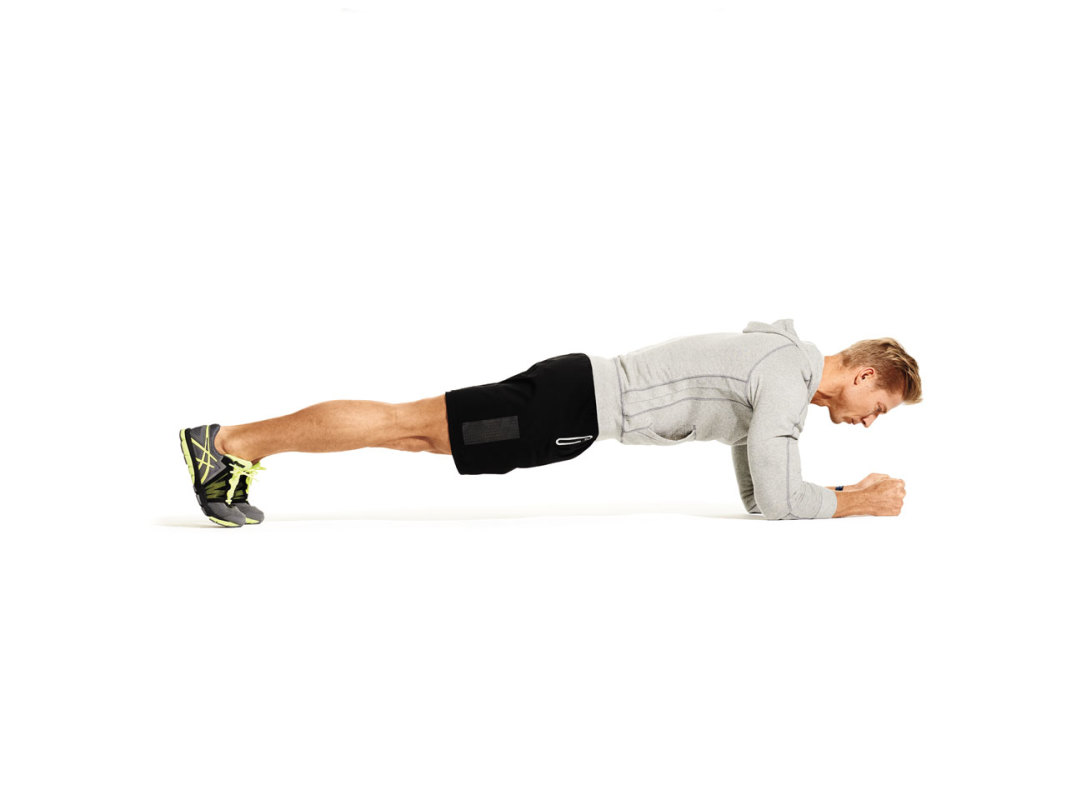Health
The Truth About Whole-Body Scans

Take a drive around certain neighborhoods in Los Angeles and you may spot as many signs advertising body scans as burger joints. Or maybe you’ve seen the ads on TV or the internet: “Protect your health! Get a body scan now!”
Are whole-body CT scans really able to do that – and what are the risks? And are DEXA scans a good way to check on your body composition?
While technologies vary, most of these high-tech checkups use computed tomography (CT) scans to examine your entire body or specific parts, such as the heart and lungs, to try to catch dangerous diseases in earlier, more curable stages.
During the 15- or 20-minute scan, you lie inside a doughnut-shaped machine as an imaging device rotates around you, transmitting radiation. The technique combines multiple X-ray images and, with the aid of a computer, produces cross-sectional views of your body. By examining the views, a doctor can look for early signs of abnormalities.
The scans aren’t cheap – whole-body scans run anywhere from $500 to $1,000 per scan and usually aren’t reimbursed by insurance. And the question of how helpful these scans really are is a matter of debate among medical experts.
Advocates promote scans as a smart part of a routine physical exam. But if you’re healthy, with no worrisome symptoms, a scan is usually not warranted, says Arl Van Moore, MD, a radiologist and clinical assistant professor of radiology at Duke University Medical Center in Durham, NC, who is also a spokesman for the American College of Radiology (ACR).
According to the ACR’s official position, there’s not enough evidence to recommend scans for those with no symptoms or family history suggesting disease. But Van Moore sees a possible exception. “There may be a benefit to people at high risk of lung cancers, such as current smokers or those with a long history of smoking,” he says.
For healthy people, the scans may cause undue worry – for instance, by finding something that turns out to be benign. Plus, the amount of radiation exposure, especially with frequent scans, is another concern. If scans are done too often, the radiation exposure may actually increase the number of cancer cases over the long term, according to a 2004 report in the journal Radiology.
The American College of Preventive Medicine says that whole-body scans “aren’t very good at finding cancer in people without symptoms” and that the radiation you get from these scans can increase your risk of cancer.
Before scheduling a body scan, talk to your doctor about your overall health risks and how a scan may or may not help you. In particular, ask yourself:
- What’s your history? Do you have a personal or family history of lung disease, heart disease, or specific cancers?
- Did you inhale? Are you a longtime smoker?
- If so, how long? Even if you’ve quit smoking, for how many years were you an active smoker?
This is a different type of scan, called DEXA (dual energy X-ray absorptiometry). You might have heard of DEXA scans to check on bone density to see if you have osteoporosis or osteopenia. It uses low-level X-rays to check on your body composition, like how much body fat you have and where it is in your body.
There are various ways to measure your body fat. Experts have told WebMD in the past that DEXA scanning is a “very good technique” and “one of the most accurate methods out there.” And researchers have called it the “gold standard” for checking on body composition – specifically, for bone, fat, and muscle. But it’s not covered by insurance, unless you’re getting a DEXA scan to screen for bone density. The cost of a DEXA scan varies, starting around $75 in some cases.
Health
Homecoming: An Evolutionary Approach for Healing Depression and Preventing Suicide

Part 2
In Part 1, I shared my challenges with depression, the fact that the suicide rate for males is so much higher than it is for females, and how these realties have impacted men and their families. Here we will look more deeply into the underlying causes and potential solutions to this world-wide problem.
The Most Underappreciated Fact About Men and Why Males Are the Risk-Takers
Dr. Roy Baumeister is one of the world’s leading social scientists. Understanding his work can better help us understand a lot about why men are the way they are and specifically why men are the risk-taking gender.
Baumeister is the author of more than thirty books and four hundred scientific articles. In his groundbreaking book, Is There Anything Good About Men? How Cultures Flourish By Exploiting Men, he says,
“If evolutionary theory is right about anything, it’s right about reproduction. Nature will most favor traits that lead to success at reproducing. But for thousands of years, men and women have faced vastly different odds and problems in reproducing. On this basic task, women faced good odds of success, whereas men were born to face looming failure.”
Given that all humans are mammals, there is a basic biological fact of life. It is the female who carries the baby in her womb and will always be 100% sure that any offspring carry her genes. Males can never be 100% certain, hence the truism, “mother’s baby, father’s maybe.” Further, through evolutionary history more females than males reproduced.
Dr. Baumeister tells us that
“Of all the people who ever reached adulthood, maybe 80% of the women but only 40% of the men reproduced. Or perhaps the numbers 60% versus 30%. But one way or another, a woman’s odds of having a line of descendants down to the present were double those of males.”
Baumeister goes on to say,
“That’s a stunning difference. Of all humans ever born, most women became mothers, but most men did not become fathers.”
The result is that throughout human history men became the risk-takers, competing with other men to be chosen by a woman to mate with him. Some successful males (think Genghis Kahn) fathered hundreds of children. Some men stuck out completely.
Women’s motto became: “Life has handed you a good thing; don’t blow it. Play it safe.”
Men’s motto was the opposite: “The odds are against you. Better take your chances.”
Says Baumeister,
“That’s why we are descended from playing-it-safe women and risk-taking men.”
Help-Seeking vs. Risk-Taking, The Empathy Gap, and Implications for Male Suicide
My father didn’t seek help with his depression until he was forced to do so and the help available at the time was inadequate. This is still true for many men today.
“Perhaps it is not surprising that, if there are large gender differences in risk-taking and protective behavior,”
says Dr. Martin Seager who we met in Part 1,
“there will also be correspondingly large gender differences in help-seeking. An individual or group that is more likely to take risks to protect others is also by definition less likely to seek help or self-protection.”
As my father found, he was not only driven to take risks to work in a challenging profession in order to take care of his family, but this indication was supported and encouraged by the society at large.
“The evidence also indicates that society is correspondingly calibrated to expect this difference and is consequently less empathic towards male death and injury,”
says Seager.
“If this is the case, then it must follow logically that men will be on average more driven than females to take their own lives because of:
a. A greater instinct to ignore personal safety and confront danger
b. A greater instinct to protect others (and greater shame at failing to do so)
c. A lower sense of entitlement to receive help or protection from others.”
Towards a More Scientific and Effective Approach to Reducing Male Suicide
Dr. Seager’s approach offers importance guidance for clinicians as well for men and their families.
By simply allowing archetypal gender differences to be researched, understood, and honored, gender-specific solutions to male suicide can indeed be found. Here are some important points:
- Carl Jung talked of archetypal patterns evolved within the human species and shared within a “collective unconscious.”
- Jung’s thinking was clearly influenced by ancient Chinese conception of “Yin” and “Yang” in which femininity (one aspect of “Yin”) is seen along with masculinity (one aspect of “Yang”) as complementary system of opposites within the natural universe.
- Dr. Seager proposes the following simple and practical instinctual, evolutionary-based, male archetypes:
- Fighting and winning.
- Providing and protecting.
- Maintaining mastery and self-control.
- These archetypes contribute to a sense of masculine identity, honor and strength. To the extent that a man feels these elements are missing, he will feel the opposite of masculine shame and failure.
My own experiences and research has convinced me that men’s inherent proclivity to maintain emotional self-control helped men be successful hunters during the millions of years humans were hunter-gatherers. Men needed to fight potential threats from other men in order to protect our families. Men needed to take-risks in order to compete with other men in our own tribes so that we would be chosen by women. These evolutionary-based instincts are built-in and though they don’t control our behavior, we still make individual choices, they cannot be ignored.
Calling masculinity “toxic” or blaming the “patriarchy” just serves to divide and alienate us. We create more conflict between left and right, males and females, Republicans and Democrats, Us and Them. We need more bridges not more walls.
I met the internationally acclaimed scholar, futurist, and activist, Riane Eisler shortly after her book, The Chalice & the Blade was published in 1987. We have been friends and colleagues ever since. She said,
“Underlying the great surface diversity of human culture are two basic models of society. The first, which I call the dominator model, is what is popularly termed either patriarchy or matriarchy—the ranking of one half of humanity over the other. The second, in which social relations may best be described as the partnership model. In this model—beginning with the most fundamental difference in our species, between male and female—diversity is not equated with either inferiority or superiority.”
Why an Archetypal Approach to Male Depression and Suicide Works Better
For some clinicians, men’s innate desire to fight and win, to protect women and children, and to control our emotions, are seen as “toxic” or “harmful.” They try and encourage men to change and express themselves in different ways. Dr. Seager’s approach is different:
“If we assume that men on average are more likely than women to be driven to ‘fight, protect’ and ‘retain mastery/self-control,’ then it is clear that trying to encourage men collectively to ‘open up, be vulnerable’ and ‘seek help’ potentially violates deep-rooted masculine instincts. Such an approach may even increase a sense of masculine shame and failure.”
Dr. Seager concludes that we have a choice between two divergent approaches:
- Socially challenging and reconstructing masculine behavior and masculinity itself as a negative stereotype through educational methods with the aim of teaching males to seek help and share emotions more openly (i.e. change masculinity).
- Changing the social attitudes and responses of society towards men and boys to create more empathy for masculinity as a positive part of the human spectrum, while providing male-friendly services for men and boys that both honors the male archetype and offer new and better ways of expressing it (i.e. change society).
In advocating for the second of the two approaches, Dr. Seager says,
“I am saddened that our profession seems to be no better than the rest of society in being blind to the fact that men and boys also have needs and problems arising from their gender. Raising this subject always incurs unreasoned resistance and even at times hostility. This in itself shows the need to keep promoting the issue.”
My father was fortunate to have survived a health-care system based on the first approach that never worked for him, he finally found his way to one that accepted his inherent drive to take risks in support of his family. I wrote about his journey in my book, My Distant Dad: Healing the Family Father Wound and an article, “My Father’s Stay at God’s Hotel: A Slow-Medicine Approach to Healing Mental Illness.”
The Moonshot For Mankind: Male-Positive Programs For Men and Their Families
I launched MenAlive in following the birth of our first son, Jemal, on November 21, 1969 and our daughter Angela, on March 22, 1972. Fifty years ago, there were very few programs that focused on men’s mental, emotional, and relational health. Now there are many. Three years ago I invited a number of colleagues who I knew were offering new and effective approaches for helping men to join me in creating a central hub for the thousands of organizations that are now available.
Come visit us at our website, MoonshotForMankind.org. Here are a few of the organizations that have joined our movement:
ManTherapy.org: Man Therapy is an evidence-based, decades-long, multidisciplinary effort to break though stigma, improve help-seeking behavior and reduce male suicide. And they’ve got the stats to back it up. Learn more here.
MenLiving.org: MenLiving delivers programs and experiences to help create a world of healthy, intentional, connected men who can heal and thrive. Learn more here.
Men and Boys Compassion Initiative (MBCI) is an international movement to help men and boys cultivate their compassionate selves. This also requires the cultivation of courage and wisdom to heal the male crisis of disconnection.
You can learn more about the work of Martin Seager at the Centre For Male Psychology.
We need more programs for men that are evolutionary-archetypally informed. You can learn more at MenAlive.com and MoonshotForMankind.org. If you like articles like these, I invite you to become a subscriber.
Health
Noah Lyles' Ab Workout for a Rock-Solid Core

Whether you’re looking for your fastest mile ever, itching to cook your friends on the court in pickup or pickleball, or cooking through a sprint workout on the track like an Olympian, you need a rock-solid abs.
“If you have a straight stick, and you throw its end on the ground, it’ll bounce back up; but if there’s bend in the stick, it might bounce in any direction,” says Team USA’s Noah Lyles, a favorite to win gold in the 100m at the Paris Olympics. “It’s the same thing when you’re running. If you don’t have a tight midline—a stable, well-structured core—when you make contact with the ground, you’re not using all the power you’re producing.”
Few athletes know more about building power and speed than Lyles. To create the explosive stride that’s led him to eight track and field world championship and Olympic medals—including double gold in the 100 and 200 meters at the 2023 world champs—the 27-year-old sprinter spends four days per week in the weight room, doing workouts that focus on building power: Exercises like cleans, hex bar deadlifts, front squats, back squats, and power throws.
To make sure he’s converting his power into speed with each step, Lyles also sweats through a core workout in just about every session, building that springy, power-saving stiffness in his middle that lets him unleash the power he builds through his barbell work and track sessions.
As part of his partnership with CELSIUS energy drinks, Lyles spoke with Men’s Journal to share one of the core routines he uses to help build gold medal abs. There are also some easier alternatives for each exercise for non-Olympians who need to scale down.
Try this workout at the end of your next strength training session, or as a workout on its own. For each move in this six-exercise routine, rest 1 to 2 minutes between sets.
1. GHD Machine Hollow Hold

Westend61/ Getty Images
Why It’s Effective
You may have done hollow holds before on the floor, but Lyles’ version adds an extra challenge: Instead of on the ground, this move is performed on the glute-ham developer bench. A staple in CrossFit gyms, this machine can be used for butt and leg development, as the name suggests, but is also popular for intense, full-range situps and other core moves.
How to Do It
- Get into the GHD with your feet in the foot pad area, your legs straight and your butt sitting off the GHD’s large pad, to start.
- Sit up so your body forms a 90-degree angle. Reach your arms straight up overhead (you can also gentle hold the back of your head).
- Maintaining a flat back, slowly lean back to open your hip angle. Lean back as far as you can—as close to horizontal as possible—hold your body steady by bracing your core.
- Once you’ve found the depth you can hold, maintain the hollow position for 30 seconds.
- Perform 4 x 30-second holds.
Easier Variation: Hollow Body Hold

Justin Steele
The closer your torso is to perpendicular, the easier the move will be. And if you don’t have access to a GHD machine, you can perform hollow holds on the floor.
How to Do It
- Lie on your back with your arms and legs fully extended, squeezing everything tight, to start.
- Press your lower back into the ground and slightly lift your legs and upper back off the floor.
- If you’re a beginner, hold this position. If you’re more advanced, rock forward and back—holding the shape of a banana.
2. Toes to Bar

James Michelfelder
Why It’s Effective
Toes to bar does more than just build a six-pack: Studies have shown this type of move is one of the most effective for strengthening the obliques, even when done without twisting. Lyles does the full toes to bar variation.
How to Do It
- Hang from a pullup bar with straight arms set slightly wider than shoulder-width. Draw your shoulder blades back and down, to start.
- Keeping your feet together and legs straight, engage your core to hinge your hips, raising your legs until your toes touch the bar.
- Control your descent back to the starting position. That’s 1 rep.
- Perform 4 x 7-10 reps.
Easier Variation: Hanging Knee Raise
- Hang from a pullup bar with straight arms set slightly wider than shoulder-width. Draw your shoulder blades back and down, to start.
- Bend your knees and bring your thighs up until they’re parallel with the floor.
- As you advance, move on to a straight-leg raise, where your legs are extended straight from hips.
3. V-Up

Why It’s Effective
For someone as strong as Lyles, this advanced sit-up might seem easy. To keep it challenging, he says, he’s uncompromising on form: “It has to be that V shape in the middle, and you have to be touching your toes,” he says, in order to get the full benefit.
How to Do It
- Lie on your back with your legs straight and arms overhead.
- Without bending your elbows or knees, contract your abdominal muscles, fold your body up by lifting your legs off the floor and stretch your arms toward your toes. Keep your back straight. As you rise, your body will form a “V” shape, and will then close like a venus fly trap.
- Pause, then return to the starting position. Do four sets of 20 repetitions.
Easier Variation: Deconstructed V-Up
If you’re flailing and throwing your torso up and down, split the move in two: Perform the upper body portion of the V-up, doing a situp with a straight back. Then do the lower body portion, raising your legs from the ground while your upper body is flat on the ground.
4. Star Plank

sergio_kumer/ Getty Images
Why It’s Effective
This move, Lyles says, is probably the most important in his core routine because it engages the core and the glutes at the same time. Running requires front and posterior muscles to work together in balance, and this trains just that.
To help fire up your glutes in this move, try getting into the side plank in a different way: Instead of lifting your hips off the floor laterally, do so from a position where your knees are slightly bent, and your feet are a little closer to your waist than they will be in the full side plank position. As you raise your body up, squeeze your butt to press your hips forward and take the bend out of your knees. As you do this, your feet will slide a bit on the ground into position.
How to Do It
- Get into a classic side plank position: Lie on your left side with your forearm on the floor directly under your left shoulder, with your legs and feet stacked. Have a slight bend in your knees.
- Prop yourself up on your elbow, and squeeze your glutes to straighten your legs as you assume the forearm side plank position so that your body forms a straight line from ear to ankles. To make this harder, perform the move with your left arm straight beneath you, balanced on your hand instead of your forearm.
- Straighten your top arm so that your torso forms a “T” shape.
- Without letting this rigid body line slacken and without bending your knee, raise your top leg (right) up away from your bottom leg. Your arms and legs will form an “X” or star shape.
- Hold this position for 15 seconds, then repeat on the other side. Perform 4 x 15-seconds holds.
Easier Variation: Side Plank
Too hard? Skip the star shape. Stop at step 3, and perform the four 15-second holds on each side.
5. Forearm Plank

Beth Bischoff
Why It’s Effective
Don’t just hang out in a plank, Lyles says. Engage your core by drawing your belly button towards your spine. Feel your lats in your back firing. Squeeze your glutes. And grip the floor with your fingers. This, he says, will turn this “easy” move into a challenge.
How to Do It
- Assume a classic pushup position, but on your forearms: Prop yourself up so that your elbows are directly beneath your shoulders, palms facing down. Form a straight line from your head to heels.
- Engage your core, glutes, legs, and lats, and hold this rigid body line for one minute. Repeat for four total holds of one minute each.
Easier Variation: Plank From Knees
You can also perform planks on your knees. Instead of a rigid line from head to heels, maintain a rigid body line from head to knees.
6. Glute Kickback Machine

Getty Images
Note: This image depicts cable glute kickback, which is an alternative if you don’t have access to a glute kickback machine.
Why It’s Effective
“A lot of people think that this machine is about how far you can throw the weight up using your hamstring, but they’re missing the point,” Lyles says. “Your core should be more turned on than your hamstrings.”
Lyles says to concentrate on doing this move with purpose. “Go at a slower pace, and push the weight up and down with the same intent and same speed. You should feel every muscle working,” he says.
How to Do It
- Stand in the machine with your forearms resting on the pad, your hands on the handles, and one foot behind you against the plate. You should be bent forward at the hips. This is the starting position.
- Brace your core, and feel it engage as you press the weight back by using your glutes, not your hamstrings. Push back slowly.
- Return to the start, maintaining this same pace. Do four rounds of 6 reps on each side.
Health
Prune Puree For Baby | The Picky Eater

My prune puree for baby recipe will quickly become one of your little one’s favorites. With a perfect creamy texture and sweet taste, it’s packed with vitamins, minerals, and dietary fiber that help keep baby regular. Plus, with my simple recipe, learning how to prepare prunes for baby is easy!


Ah, prunes. Prunes get such a bad rap – but they’re actually quite delicious! They’re basically just dried plums that look like massive raisins and babies love the flavor.
You can easily make just plain prune baby food, but I found that the addition of some Fuji apples adds another dimension and makes it taste even better. It’s one of my most popular baby food recipes!
🥄 When Can Babies Eat Prunes?
Babies can start eating prunes as soon as they begin solids, typically around 4-6 months of age. I generally recommend my homemade prune puree after your baby has tried about 4 to 5 mild vegetables like carrots, sweet potatoes, green beans, and peas.
This helps your baby get used to less-sweet first foods. Babies are already familiar with sweet tastes from breastmilk and formula, so it’s important to introduce vegetables early to ensure they don’t reject them later on.
When I started solid foods for my kids, around 6 months of age and after they had already had a bunch of veggie purees, I gave them small amounts of this prune baby food to help keep them regular.
👶 Does Prune Baby Food Help With Constipation?
Yes, my apple and prune puree can help your baby when constipated. Prunes are high in fiber and they also contain sorbitol, which helps get things moving by pulling water into the digestive tract. In fact, I like using pureed prunes better than prune juice since it works just as well but won’t typically cause diarrhea the way prune juice might!
I recommend starting with 2-3 tablespoons of prune puree for baby constipation and increasing as needed. It typically takes 12 to 24 hours for the prune baby food to take effect.
My prune baby food recipe is delicious and a great first food all babies love, with no added sugar. It’s also a fantastic mix-in for oatmeal, yogurt, and other veggies for toddlers and older kids.
I’ve found that homemade prune baby food can be healthier than store-bought baby food pouches, as it contains no added sugar, fruit juices, artificial colors, or flavors. Prunes are a great addition to your baby’s diet as they are full of antioxidants and fiber, as well as an excellent source of Vitamin A, Vitamin B6, potassium, and Vitamin K (source).
Plus, all that dietary fiber helps to keep your baby regular. My prune puree is a natural remedy for constipation that works well for the whole family.
And I promise, learning how to make prunes for baby is so easy! My simple baby food recipe is made with just three ingredients and comes together in 30 minutes or less.
But the best part is that it’s fantastic for busy parents. I would often make a big batch of my prune puree for baby to store in the refrigerator or freezer for months – so I always had some homemade baby food on hand when I needed it!
Latest Recipe Video!
🥘 Ingredients
My prune recipe for baby uses simple ingredients easily found at your local grocery store. See the full recipe card at the bottom of the post for the exact amounts and nutritional information.


Organic Prunes: I recommend using dried prunes with no added sugar (you should only see one ingredient on the package – prunes!). You can also use fresh prunes, as a prune is simply a dried plum.
Organic Fuji Apples: Fuji apples, with their sweet flavor and pinkish flesh, pair perfectly with prunes. While you don’t have to include apples in my prune puree recipe, they help mellow out the flavor for babies. It’s important to choose organic apples since they’re on the EWG’s Dirty Dozen list.
Water: Used to cook the fruit and give this apple prune puree a smooth consistency that your baby can easily eat.
🔪 How To Make Prune Baby Food
Anyone can learn how to make prune puree for baby with my simple recipe. Watch my video below to see the step-by-step instructions in action!
Prep The Fruits: To begin, I wash the apples, cut them in half, and remove seeds and stems. Then I cut each half into 4-6 pieces and remove the pits from the prunes. Next, I put the apples, prunes, and water into a large pot, cover with a lid, and turn the burner on high.


Cook: I cook the fruit for 8 minutes until tender, stirring occasionally.


Puree: Once cooked, I pour everything into a blender and puree the fruit until smooth. For babies 4-8 months, a totally smooth puree is the ideal texture. Once your baby gets older (9-12 months) you can make a chunkier puree.


Store Or Serve: After it’s blended, I pour the smooth puree into ice cube trays and allow it to cool. Then I cover or wrap the trays and pop them in the freezer. You can also serve some of the puree to your baby right away.


My #1 Secret Tip for my prunes baby food recipe is to use a really good blender, preferably a high-powered blender like a Vitamix. This is so important to getting that perfectly smooth consistency that your baby will love!
If you’re just using a regular blender or a food processor, you’ll get a slightly grainy consistency which is still fine for your baby to eat, but may not be as easy for them to eat as a super smooth puree.
Other Tips To Keep In Mind:
- Use Pitted Prunes: Save yourself time by using pitted prunes so you don’t have to remove the pits yourself.
- Keep Skins On: I always keep the skins on when making this recipe. If you remove the apple skin, you will lose some of the fiber and nutrients. The skins will blend easily once cooked down – your baby won’t be able to detect them in the puree.
- Blend In Batches: If you’re making a large quantity of prune puree for baby you’ll need to blend it in batches to avoid overloading the blender and ensure a smooth puree.
- Freeze For Later: I highly recommend making a large batch and using baby food freezer containers or ice cube trays to store for later. This will save you time and last you for several months.
📖 Variations
Mash: If your little one is older, instead of pureeing, you can mash the stewed prunes for baby and leave them chunky. They can then feed themselves and chew with their gums. I would do this for my kids once they were about 10-12 months old.
Breast Milk Or Formula: Before serving, stir in some breast milk or formula for added calories and nutrition. Do not add breast milk or formula before freezing or storing in the fridge (as it will spoil) — add it right before serving. When using a formula, I recommend using one of these organic baby formulas, which are a close formulation to breastmilk.
Baby Food Combinations: You can easily make prune puree combinations for baby by mixing it together with some other baby food like pureed banana, peaches, nectarines, or even pear puree.
Add Spices: If your baby is ready for more flavor, try adding a pinch of cinnamon, cardamom, pumpkin pie spice, or nutmeg. My kids loved this puree mixed with cinnamon and nutmeg.
🍽 Serving Suggestions
While I created this recipe for little ones, my baby prune puree is really versatile and doesn’t have to just be for infants!
Baby Led Weaning: There are a lot of great options when deciding how to serve prunes to baby for self-feeding. Spread a thin layer of the puree on toast or soft bread. Another great idea is to mix the puree with mashed vegetables or fruits, creating a nutrient-packed meal that is easy for your baby to pick up and eat.
Toddlers: When my kids were toddlers, I’d mix this into simple oatmeal, yogurt, or other fruit purees. Prune puree can also be added to baked goods like my peanut butter muffins and vegan chocolate chip muffins.
Older Kids & Adults: Use it as a topping for these air fryer pancakes or vegan protein waffles. It’s also a great addition to smoothies like my apple carrot smoothie or banana smoothie bowl.
🧊 Storage Directions
Fridge: Once cool, I transfer the puree to an airtight container and place it in the fridge. It will keep for up to 5 days.
Freezer: For longer storage, I let the baby food cool completely before transferring it to an ice cube tray with a fitted lid and then pop it in the freezer. You can also wrap it in plastic wrap to prevent freezer burn. Once frozen, I pop out the cubes and store them in a freezer bag.
Defrost: When ready, I thaw the cubes in the fridge overnight in a small bowl or warm them gently in the microwave until they reach room temperature, making sure they’re not too hot for my baby.
❓Recipe FAQs
Yes, you do need to cook prunes before feeding them to your baby. Prunes are thick and sticky, and difficult to chew. By cooking the prunes, you make them softer, and easier to mash in their gums. I recommend cooking and pureeing your prunes with water so that your baby can easily swallow them.
When introducing prune puree to a 6-month-old, I recommend starting with 1-2 tablespoons per serving, which is typically enough to help with constipation and provide nutritional benefits. You can gradually increase the amount as your baby gets used to it.
My prune puree for baby is not a choking hazard, but whole or dried prunes can be. Always serve prunes in a pureed form for babies, and ensure they are soft and easy to swallow. For older babies and toddlers, make sure prunes are chopped into small, manageable pieces to avoid choking.


Want to Save This Recipe?
Enter your email & I’ll send it to your inbox. Plus, get great new recipes from me every week!
By submitting this form, you consent to receive emails from The Picky Eater.
Love this baby food recipe? Please leave a 5-star rating 🌟 in the recipe below and/or a review in the comment section further down the page!
You can also FOLLOW ME on FACEBOOK, INSTAGRAM, and PINTEREST to see more delicious, healthy, family-friendly food, and if you have any questions, I’m here to help!
📋 Recipe Card
Prune Puree For Baby
My prune puree for baby recipe will quickly become one of your little one’s favorites. With a perfect creamy texture and sweet taste, it’s packed with vitamins, minerals, and dietary fiber that help keep baby regular. Plus, with my simple recipe, learning how to prepare prunes for baby is easy!
Servings: 16 ounces
Calories: 77kcal
Shop Ingredients on Jupiter- Use baby food freezer containers or ice cube trays to store this baby food. That way you can make one large batch that will last you and your baby for several months!
- Use a good blender, or food processor to easily blend the fruit puree.
- Use pitted prunes to save yourself time from removing the pits yourself.
- If you remove the apple skin you will lose some of the fiber, so keep the skins on! They will blend easily once cooked down.
- Thaw in the fridge the night before use, or thaw by putting the ice cube in a bowl over a bowl of hot water on the counter to defrost.
- Spice up your baby’s food! Add a pinch of cinnamon, nutmeg, or allspice to this recipe!
- 1 ice cube = 1 oz of food
- Adapted from BabyLove
Serving: 1ounce | Calories: 77kcal | Carbohydrates: 21g | Protein: 1g | Fat: 1g | Saturated Fat: 1g | Sodium: 2mg | Potassium: 189mg | Fiber: 3g | Sugar: 14g
Source link
-

 African History5 years ago
African History5 years agoA Closer Look: Afro-Mexicans 🇲🇽
-

 African History6 months ago
African History6 months agoBlack History Facts I had to Learn on My Own pt.6 📜
-

 African History5 years ago
African History5 years agoA Closer Look: Afro-Mexicans 🇲🇽
-

 African History1 year ago
African History1 year agoMajor African Tribes taken away during the Atlantic Slave Trade🌍 #slavetrade #africanamericanhistory
-

 African History1 year ago
African History1 year agoCameroon 🇨🇲 World Cup History (1962-2022) #football #realmadrid #shorts
-

 African History6 months ago
African History6 months agoBlack History Inventors: Mary Kenner 🩸
-

 African History1 year ago
African History1 year agoNo African pre-Columbus DNA? 🤯🤯 #history #mesoamerica #mexico #african
-

 African History1 year ago
African History1 year agoOrigin Of ‘Cameroon’ 🇨🇲😳#africa

























